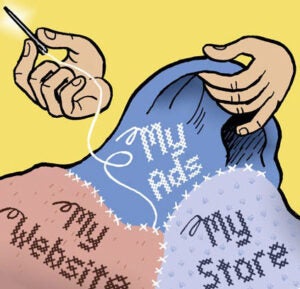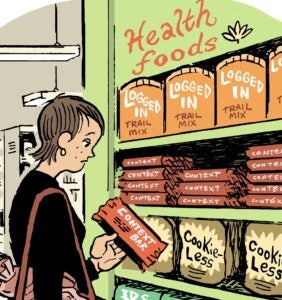 “Data-Driven Thinking” is written by members of the media community and contains fresh ideas on the digital revolution in media.
“Data-Driven Thinking” is written by members of the media community and contains fresh ideas on the digital revolution in media.
Today’s column is written by Frost Prioleau, CEO and co-founder of Simpli.fi.
A few months back, Marc Andreesen made the bold prediction that the news industry, which includes a large group of local publishers, will grow 10 times to 100 times in the next 20 years. He has backed up his predictions with his pocketbook by making investments in news firms such as Talking Points Memo, Business Insider and Pando Daily.
Similarly, Warren Buffett has invested in local news companies through BH Media Group. And Jeff Bezos recently plunked down $250 million to acquire The Washington Post.
While these well-known investors and entrepreneurs make headlines with their investments, other local media companies are also making progress but with little fanfare.
Most of the discussion around publishers and programmatic advertising has centered on the low prices being received from auctioning off their unsold inventory on the programmatic exchanges. However, the bigger programmatic opportunities for many publishers and networks are on the revenue side.
Savvy local media companies know that the real opportunity for them is to use programmatic to broaden what they sell. Instead of merely selling their own inventory, programmatic brings several advantages that enable local networks to sell a broader suite of solutions.
These include:
Greater reach: Local networks never have to lose an RFP just because they don’t have enough inventory on their owned and operated sites to fill it. Programmatic provides flexible reach to fill advertiser requirements for tightly targeted audiences, even those targeted to local markets.
Customizability: One of the concerns publishers have about selling “off-property” inventory is that the audience will not be a close match to their on-property audience. By using unstructured data, publishers can precisely tailor their audiences to the needs of their local markets and closely match the audiences of their own site.
Performance: Programmatic delivers the ROI that advertisers are looking for, which helps repeat business. In local, repeat business is everything, as campaign sizes are typically small and recurring revenue is essential to building a profitable business.
Price points: Another concern of local networks is whether they can make enough of a margin on third-party inventory to cover their sales, ad/ops and other costs. The good news here is that programmatic has inventory available at a wide range of price points. Basically networks can control their own margins by setting their max bid and clearing prices.
Most importantly, programmatic offers local media companies an opportunity to sell a unique product instead of a commodity. Most have been down the path of reselling commodity products, like search, and have experienced a pricing “race to the bottom” in doing so. With the other real-time bidding (RTB), networks can use unstructured data combined with their own data, inventory and local expertise to deliver a truly customized audience to their advertisers.
Also, by leveraging the transparency associated with unstructured data and RTB, local networks can deliver audience insights that help them increase advertiser satisfaction and reduce customer churn, essential ingredients to a growing a healthy segment.
In order for the news business to get to 10 times, let alone 100 times, its current size, all participants in the sector have to fire on all cylinders. Programmatic can play a big part of that effort.
Follow Frost Prioleau (@phrossed), Simpli.fi (@Simpli_fi) and AdExchanger (@adexchanger) on Twitter.













